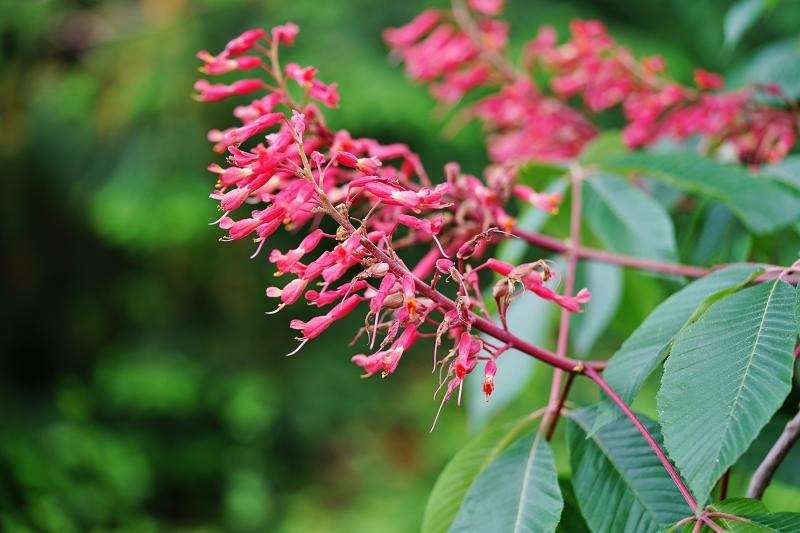The buckeye tree gets its name from the tree's seed, or nut, which has a pale patch on a shiny red-brown surface, looking like a deer’s or buck's eye. As buckeye is the official state tree of Ohio, Buckeye also became the nickname for the state and its settlers.
In 1878, The Ohio State University, with emphasis on the initial “The,” became the correct and official name of the university. Many people somewhat feel that “The” was added on to make clear to the other Ohio state colleges which one really is the top dog.
The red buckeye tree (Aesculus pavia) grows to a height of about 10 to 20 feet tall with an equal spread. In April and May, the small, shrub-like tree is covered with upright clusters of 4- to 8-inch-long, brilliant-scarlet blooms. The tube-shaped flowers are magnets for hummingbirds, and they are one of the few shade-blooming nectar sources. The flowers bloom around the same time that the hummingbirds return to the Northeast after their winter migration.
The deep-green leaves have five to seven leaflets that droop gracefully. Foliage on the red buckeye emerges sooner in the spring than on many other trees for a welcome burst of green in the early spring landscape.
The lush foliage gives perfect cover for songbirds. Red buckeye often begins blooming when it’s as small as 3 feet tall. This small tree can be grown as a shrub with multiple trunks or pruned into a tree form with a single trunk.
Because it stays small as a mature tree, it can be planted safely underneath power lines. It is an increasingly popular landscape tree not only for residential properties, but also being widely planted in parks, and along roads and streets. In the garden, try pairing it with Joe Pye weed plants.
Red buckeye will grow well in partial or full sun. When grown in the shade, the tree will be more shrub-like and open. The decorative trees do well in almost any soil, although they grow best in rich, moist, well-drained soil. Water every week for the first year. Once established, red buckeye is tolerant of moderate drought. If you plant it in full sun, add a deep layer of organic mulch to keep the roots cool and retain soil moisture. Red buckeye is hardy in USDA Zones 4 to 8.
Do not fertilize your red buckeye tree the first year, but you can use a liquid fertilizer once a month in the second year until the roots are well established. You really do not need to feed red buckeye trees after four or five years.
Because red buckeye grows a long taproot to compete for moisture in the woodlands, plant it while very young.
In the fall, your tree will produce round fruits, 1-2-inches wide, that contain the buckeye seeds. The seeds are inedible and somewhat toxic, so keep them away from children and pets.
Plant a red buckeye, and your yard will be a hummingbird playground. And let your kids believe in Santa Claus, because there are still grown adults who believe Michigan will beat The Ohio State University.




















































